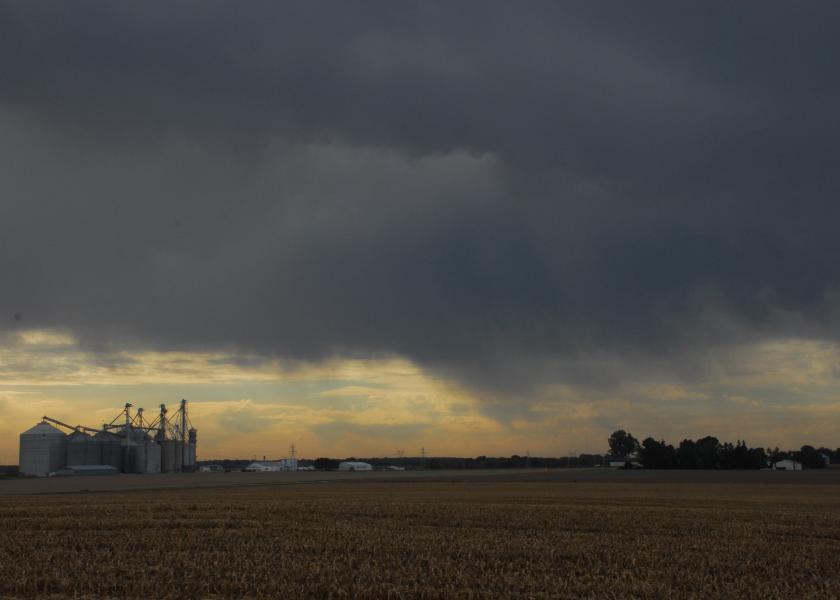CoBank: COVID-19 Will Continue To Steer Economy In 2021

A new report from CoBank details 10 key factors driving and shaping the economy in 2021. There is one big factor that weighs heaviest on the pace for economic recovery—the speed and reach of the COVID-19 vaccinations. CoBank expects that as the vaccine is distributed more broadly, the latter half of 2021 will show stronger consumer demand.
“The coming year will be a recovery year for most Americans and the businesses that make up the U.S. economy,” said Dan Kowalski, vice president of CoBank’s Knowledge Exchange division. “The early part of the year should look very different than the latter, but in total, economic growth is estimated to be about 4%, following a retreat of roughly 4% in 2020.”
We march through the final days of 2020, here are those 10 factors to watch in 2021:
1. Global Economy: Uneven Recovery Ahead
CoBank economists say COVID-10 will steer the global economy in 2021 and the pandemic will continue the trend of uneven economy recovery. It’s noted China has recovered fastest from the pandemic, and Europe has suffered the most. The pandemic’s long-tail will be the government debt around the world.
From CoBank: “Our confidence in GDP forecasts has increased since mid-2020, but uncertainties related to the dissemination and uptake of vaccines mean timing the recovery is still exceedingly difficult.”
2. U.S. Economy: COVID is Still the Economy
The next couple of months are critical in for domestic economy as fiscal policy decisions are made.
From CoBank: “Roughly 10 million Americans who lost their jobs early in the pandemic have yet to find work, and many of them are receiving some form of public support. If and how Congress chooses to fund further relief will impact the speed of the recovery.”
3. Monetary Policy: Less Dramatic but No Less Critical
CoBank cites central banks as “economic heroes” through the pandemic, giving the Federal Reserve’s quick action in the early weeks and continued stabilization as an example.
From CoBank: “With short term interest rates firmly at zero, the Federal Reserve will manage a few levers in the coming year, advocating for fiscal policy and keeping a close watch on longer-term rates and inflation, among other things."
4. U.S. Government: Sweeping Leadership Changes
With the new Biden administration and narrow margins of power in Congress, CoBank cites managing the pandemic as the primary focus before infrastructure, trade policy, social justice or climate change can take precedence.
5. U.S. Farm Economy: A Strong 2020 Finish Boosts Potential
After more than one-third of net farm income from government payments in 2020, the new year starts with higher commodity prices and low interests, which will provide an “important financial buffer” in the year ahead. CoBank expects farmland values to remain stable in 2021.
6. Specialty Crops: Preparing for More Shifts in Consumer Demand
Less foodservice and more food being bought via retail has brought historic shifts in logistics and supply chains. This will bring further adaptation in the specialty crop industry.
From CoBank: “Some growers, packers, and processors have successfully managed to increase or reroute products into retail channels like grocery stores and home delivery of food boxes. However, steep financial losses from the loss of foodservice contracts will ultimately result in the rationalization of some processing assets and production acreage.”
7. Grain, Farm Supply and Biofuels: Recovery in Motion
From CoBank: “The outlook for grain is more favorable than a year ago, although carry has evaporated with the inversion of futures prices. The outlook for farm supply cooperatives is positive for 2021 following a very orderly harvest, rising grain prices and decent farm liquidity. The ethanol outlook is stable but guarded, with considerable growth and margin opportunities favoring ethanol co-products vs. fuel. After experiencing a near 50% reduction in demand during mid-March 2020 to mid-April 2020, fuel ethanol in the U.S. has recovered to about 90% of pre-COVID levels.”
8. Dairy and Animal Protein: Higher Feed Costs and Restaurant Reboot
The top challenge for livestock in the year ahead is shaping to be rising feed costs as corn and soybean meal prices are at multi-year highs. Domestic demand is dynamic with the changes in foodservice demand, and international demand is also in question.
From CoBank: “China’s rebuilding of the nation’s hog herd brings into question its appetite for foreign protein in 2021 as supplies climb. The U.S. dairy sector stands to benefit from the rebound in Chinese hog production with dry whey used as a protein supplement in China’s hog feeding rations.”
9. Rural Electricity: From Reactive to Adaptive
One big area of change CoBank expects in 2021 is an increase in solar. Its economists point to one report claiming solar is the cheapest form of energy in history and business leaders are pointing to the renewable source to be included in climate change mitigation efforts.
10. Rural Communications: Big Spending Not Likely, But Regulatory Change Is
From CoBank: “We expect a good bit of gridlock in Washington in 2021. It’s likely that any COVID-related stimulus will focus on near-term economic needs versus investing in projects that take years to produce results. That leaves the Federal Communications Commission (FCC) as the remaining institution in Washington to enact policies that will help rural communication providers. In 2020 the FCC held its Citizens Broadband Radio Service (CBRS) spectrum auction that was much more rural friendly than any of its past auctions. And as a result, rural operators are now able to build carrier-grade fixed wireless networks at significantly reduced costs.”







